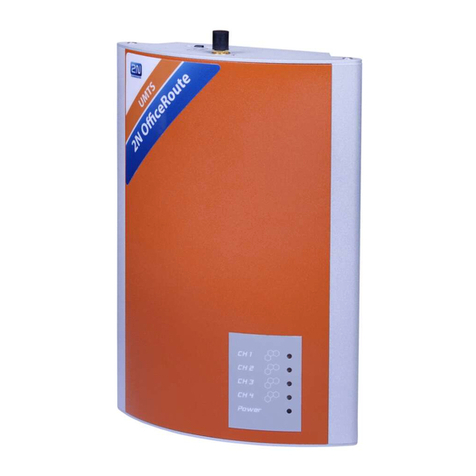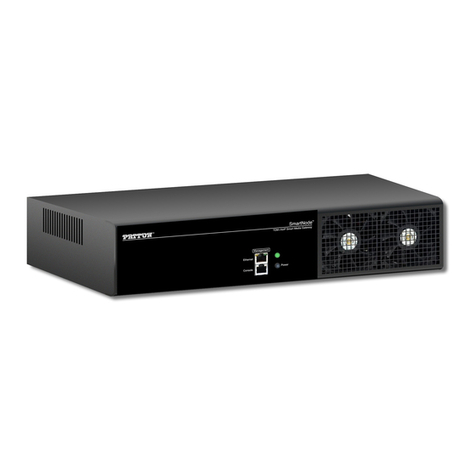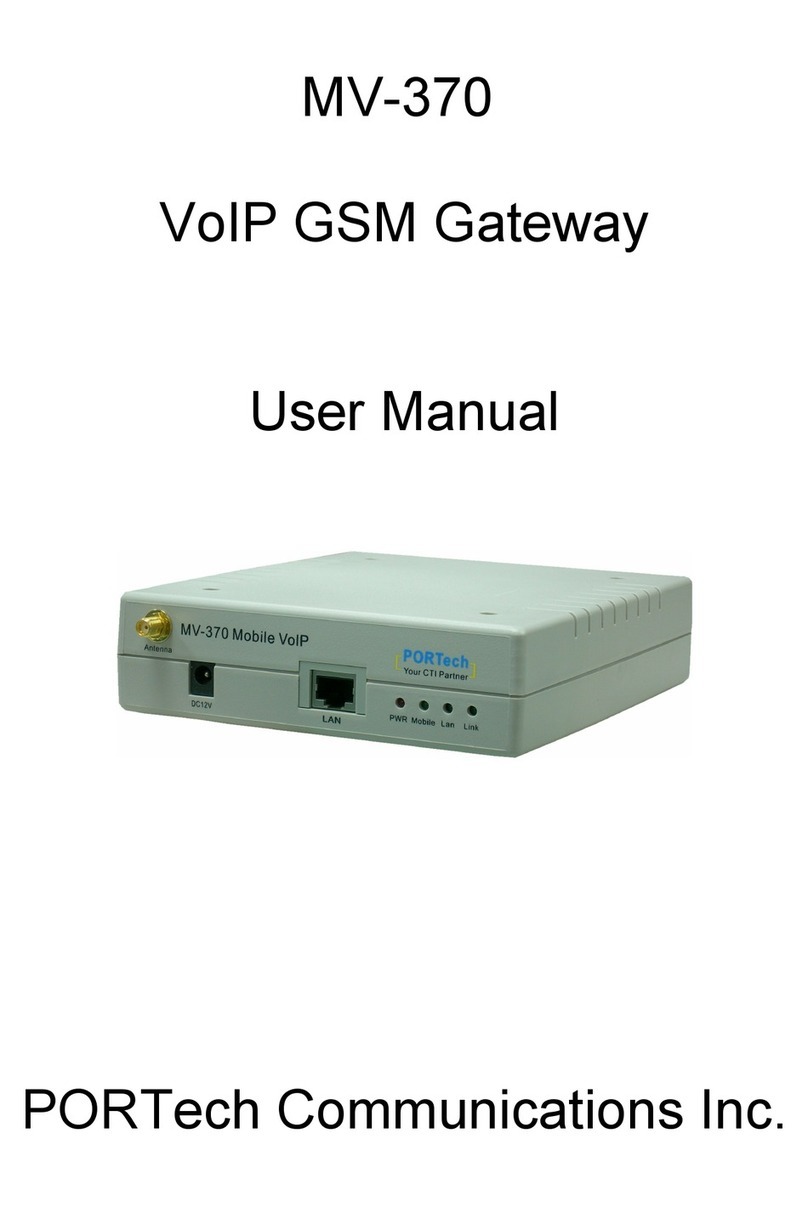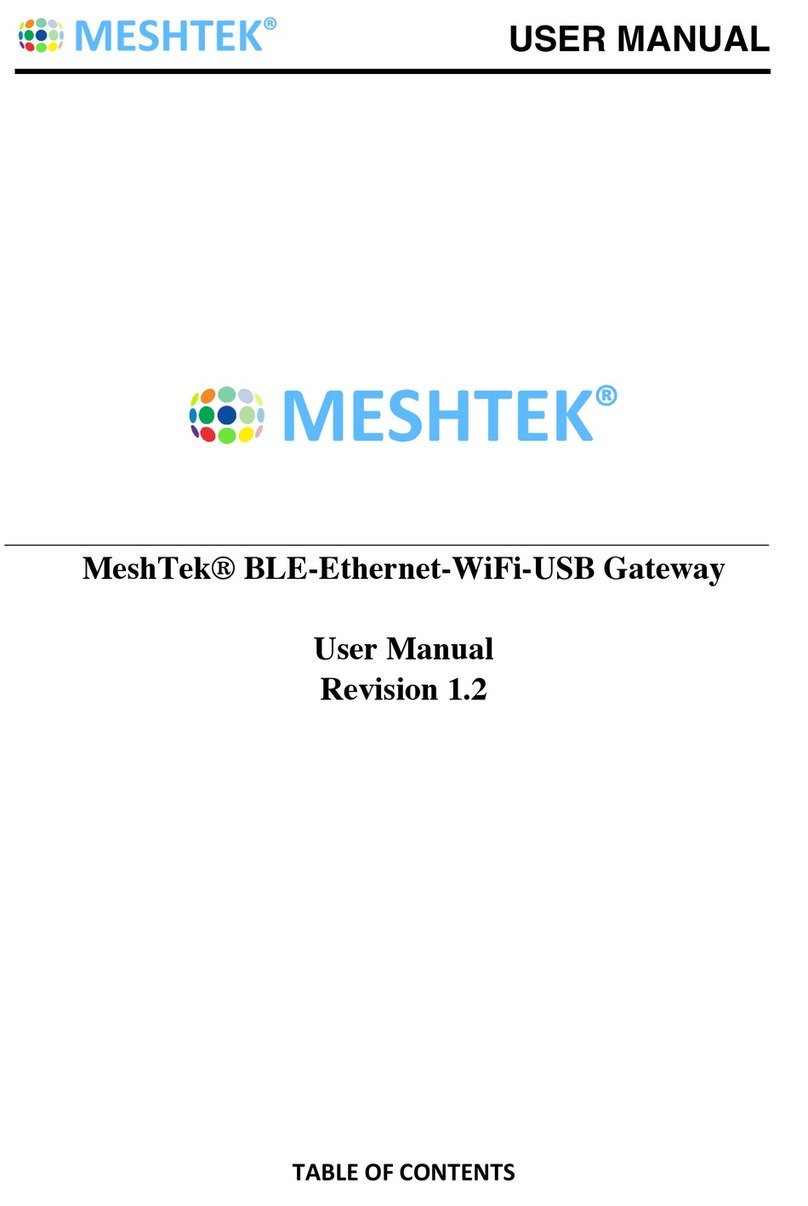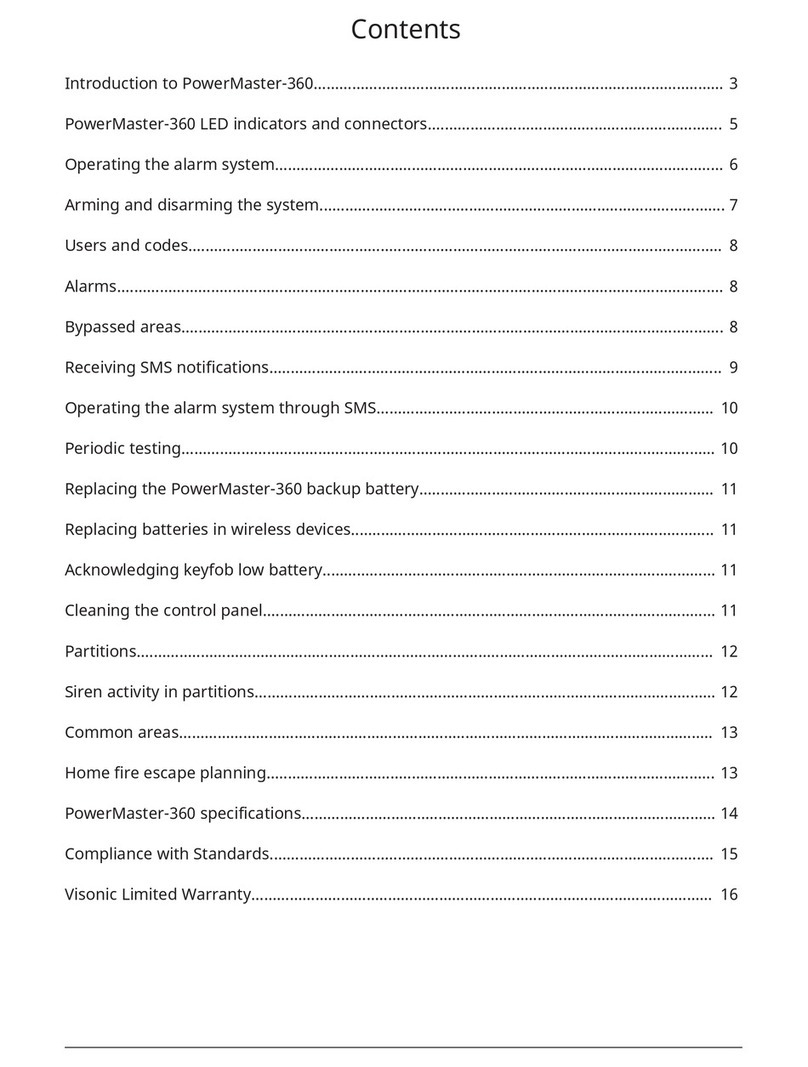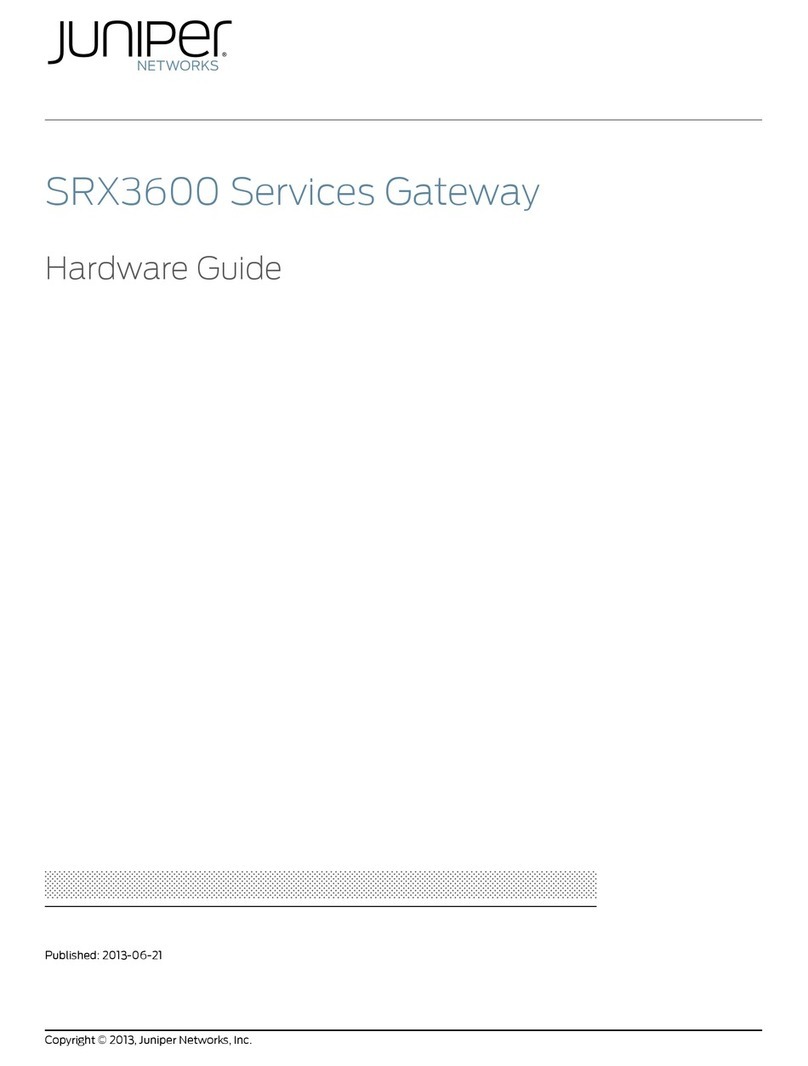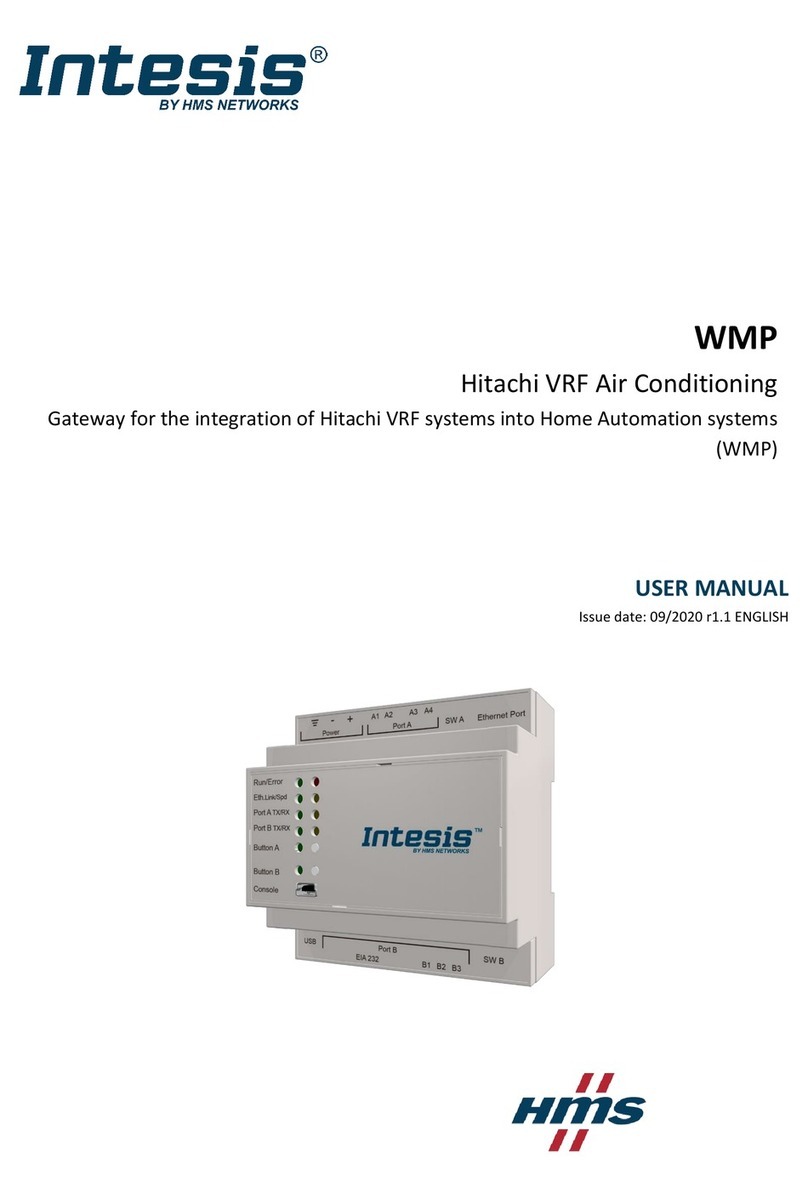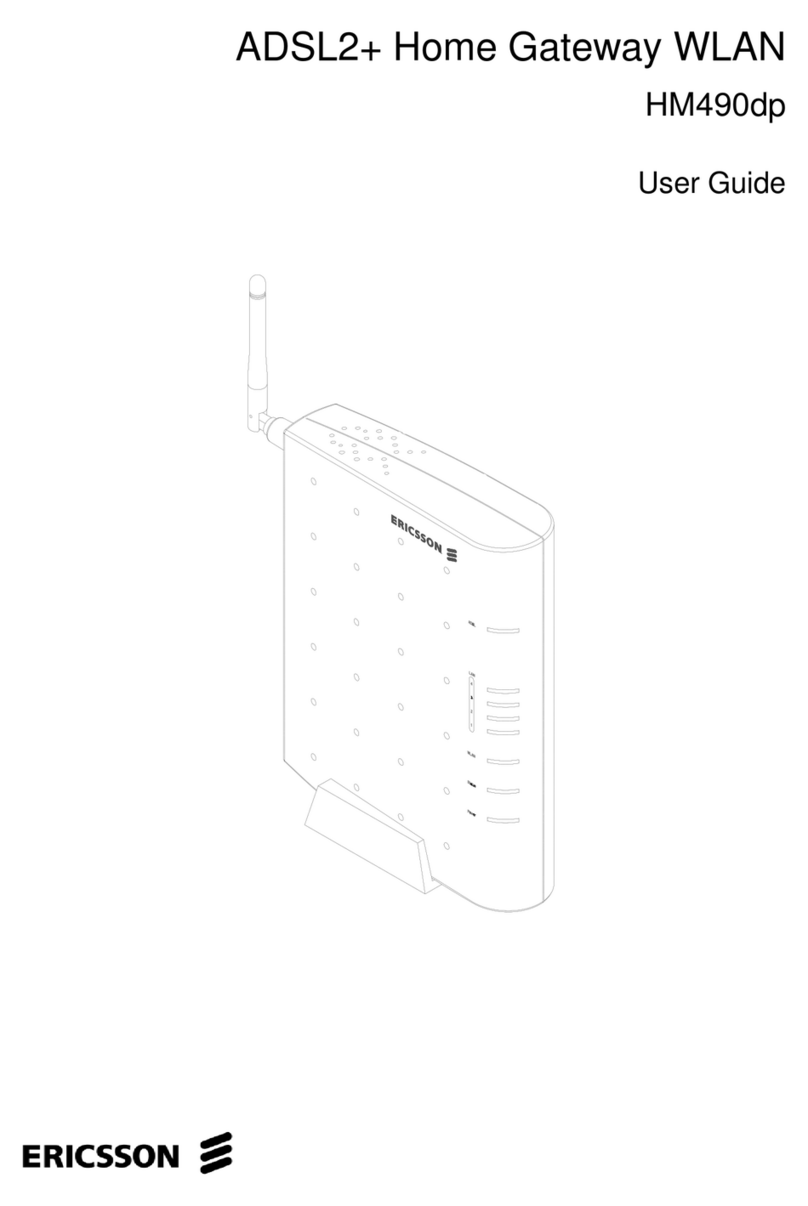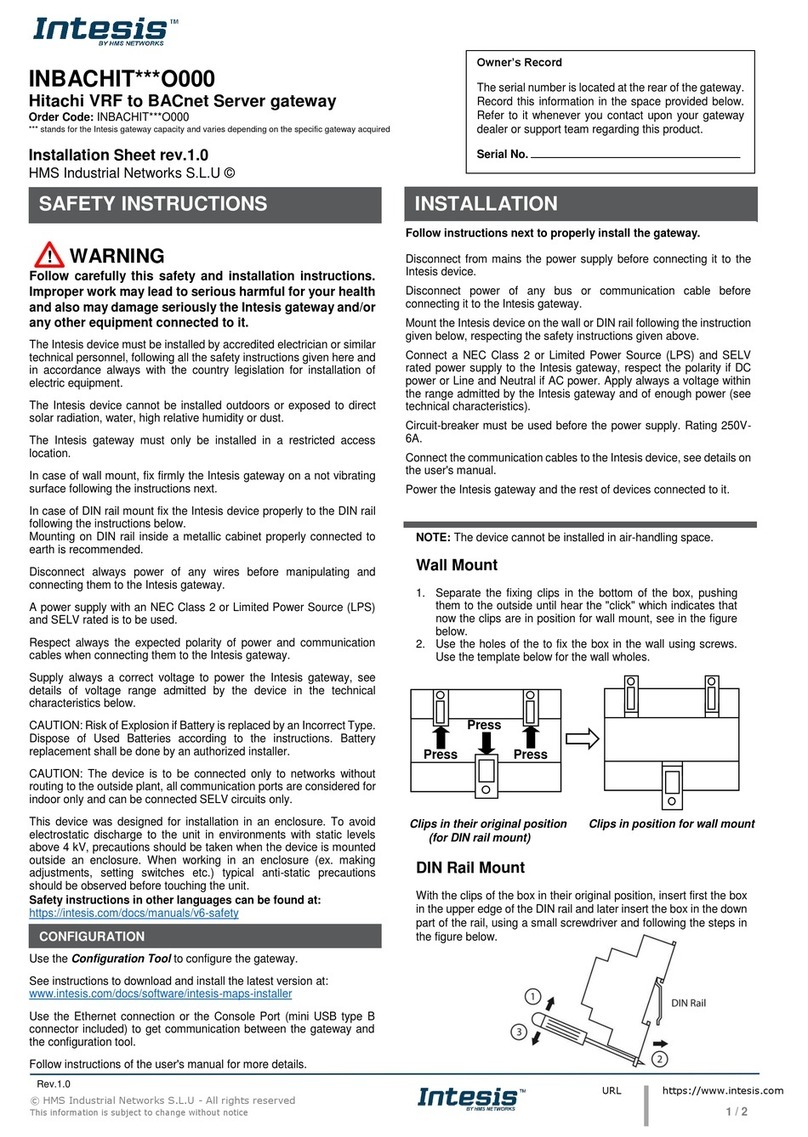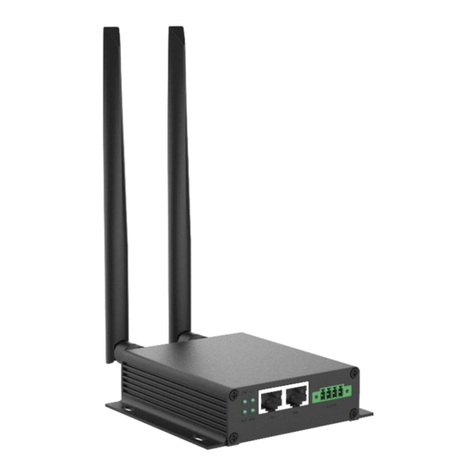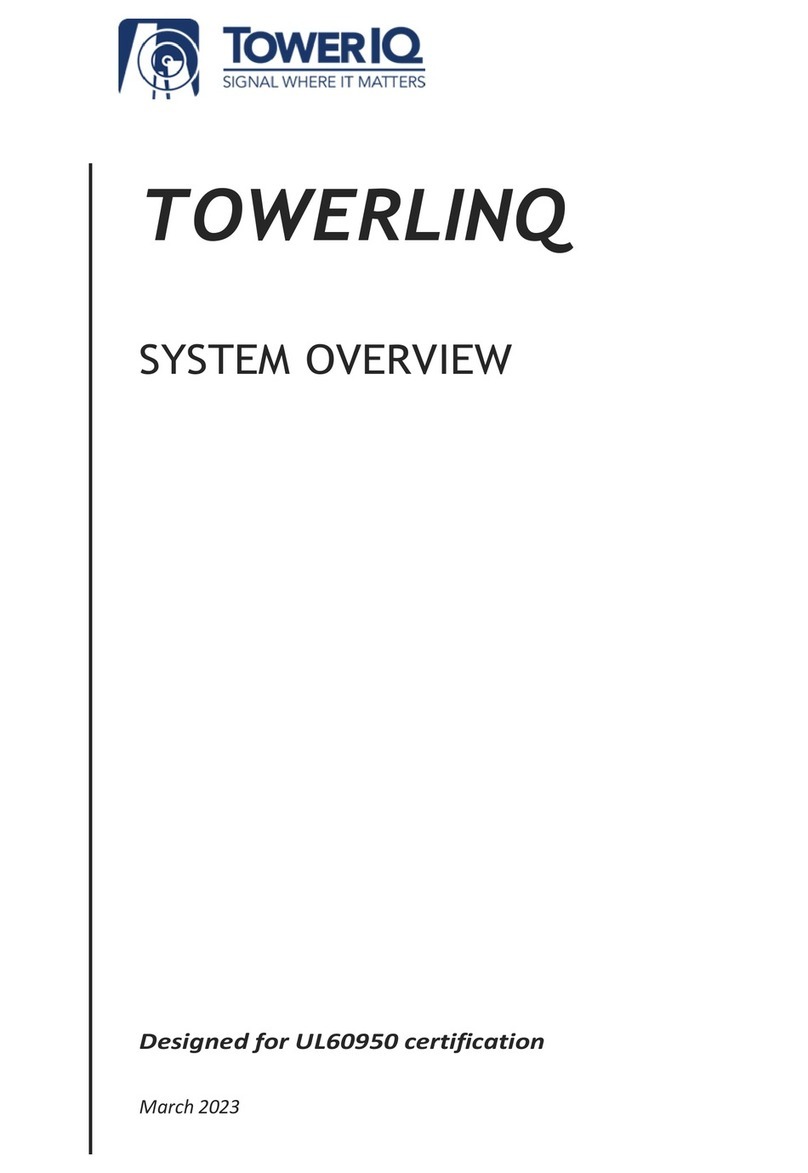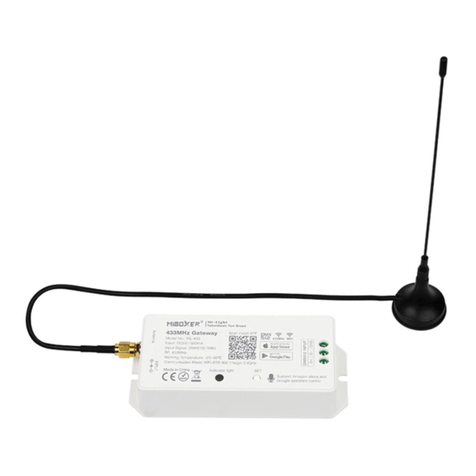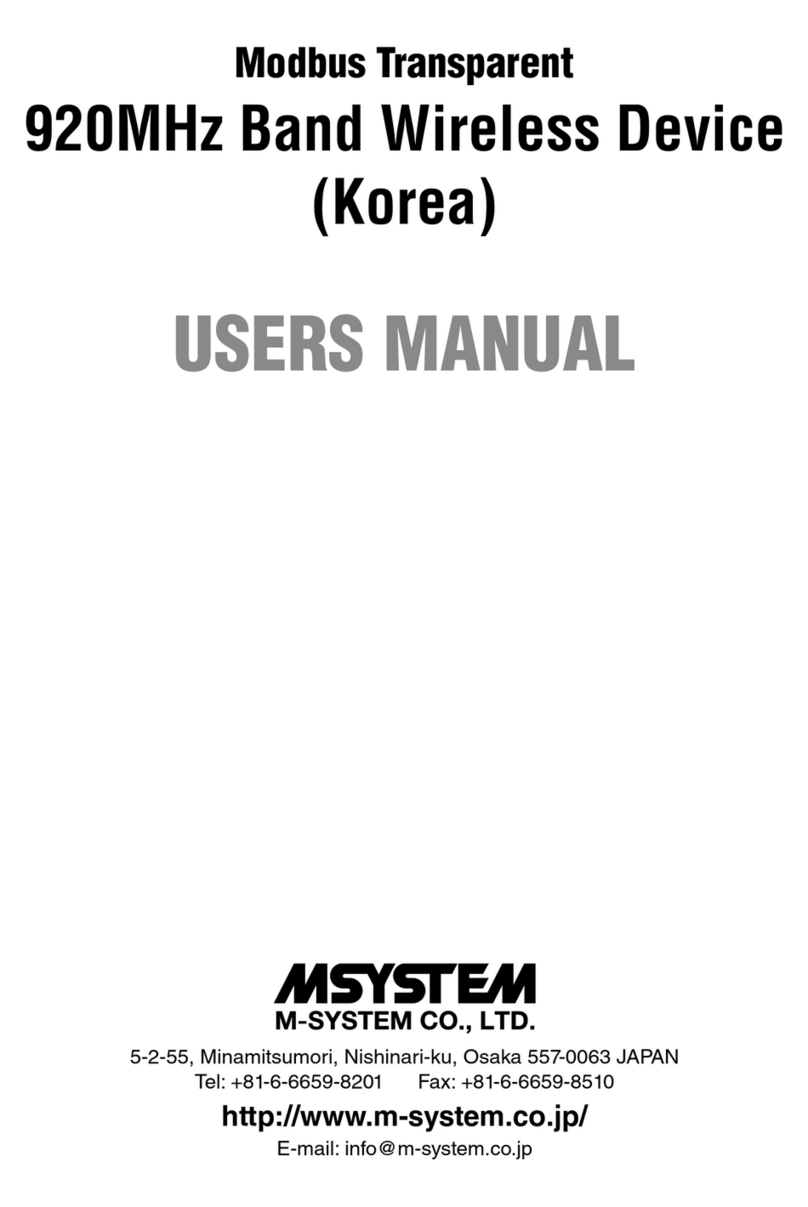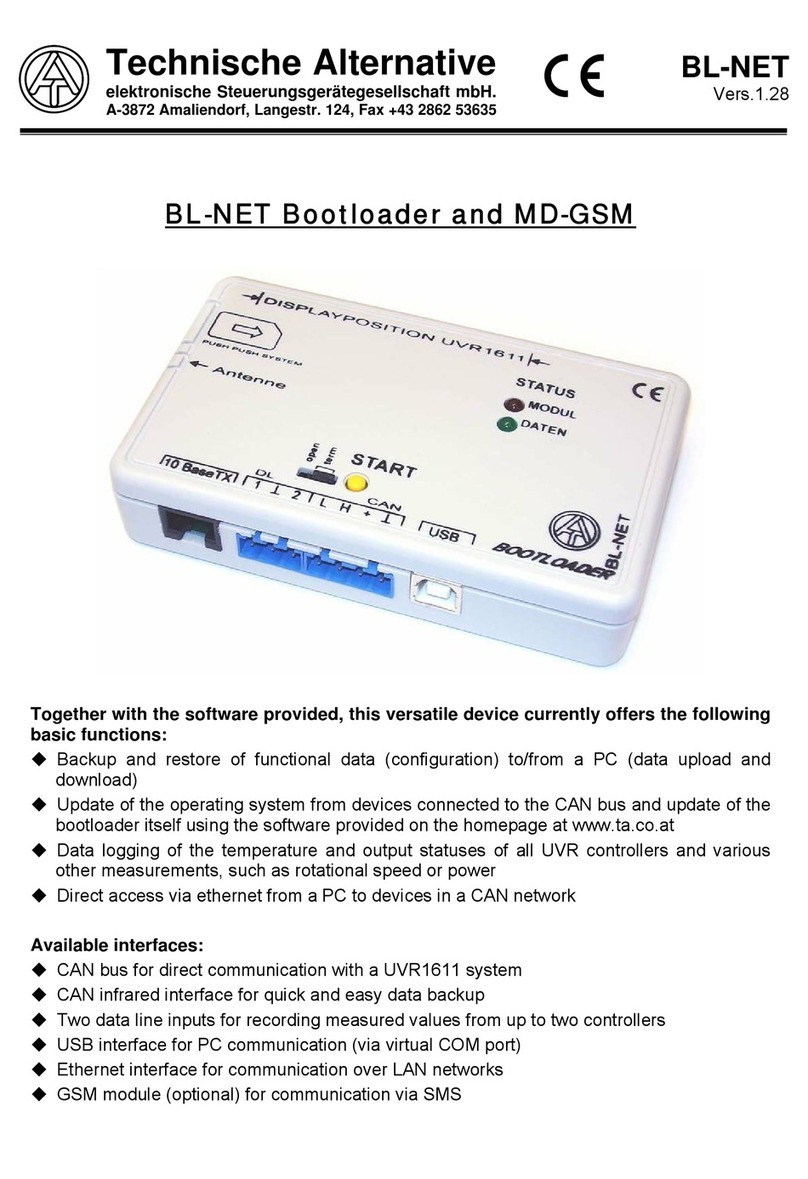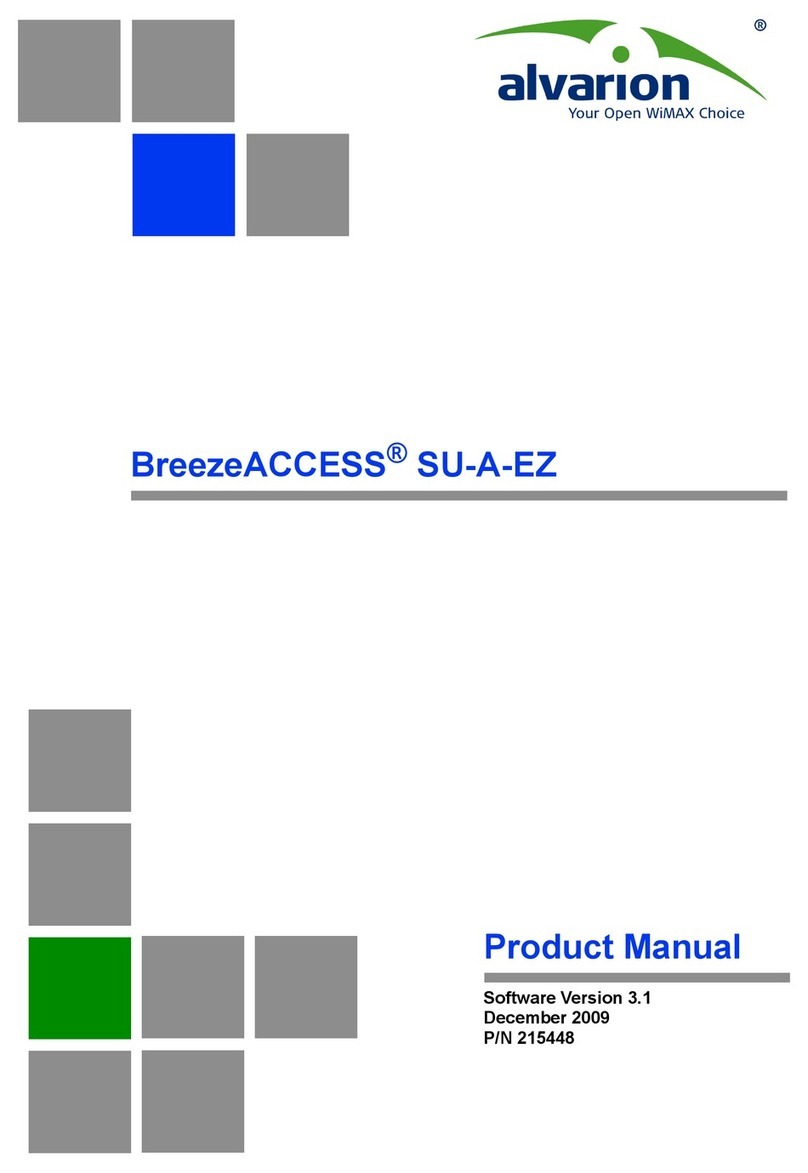BST ekr 500 Repair manual

Web Guiding System
Interface Description
ekr 500 digital Unit Touch
CANopen User Gateway
MD.520.EN.03
Translation of the Original Manual

BST GmbH
Remusweg 1
D-33729 Bielefeld
Tel.: +49 (0) 521 400 70 0
Fax: +49 (0) 5206 999 999
E-Mail: [email protected]
Internet: www.bst.group
This documentation is protected by copyright. The translation as well as reproduction and distribution in any form is forbidden without the approval
of the rights holder and will be pursued under civil and criminal law. Technical modifications reserved.

Table of contents
ekr 500 digital Unit Touch – CANopen User Gateway iii
Table of contents
1 About This Document........................................................................................ 4
1.1 What You Need to Know............................................................................................... 4
1.2 Target Group................................................................................................................. 4
1.3 Storage and Distribution............................................................................................... 4
1.4 Meanings of the Safety Instructions and Symbols........................................................ 5
1.4.1 Safety Instructions ........................................................................................................ 5
1.4.2 Symbols......................................................................................................................... 5
1.4.3 Operation Using Keys.................................................................................................... 5
1.5 More Detailed Information........................................................................................... 6
2 Functional Description ...................................................................................... 7
2.1 Utilisation...................................................................................................................... 7
2.2 CANopen Communication Profile ................................................................................. 8
2.2.1 Fundamentals ............................................................................................................... 8
2.2.2 Object Dictionary .......................................................................................................... 9
2.3 Communication Objects.............................................................................................. 10
2.3.1 Service Data Objects ................................................................................................... 11
2.3.2 Process Data Objects .................................................................................................. 13
2.4 Communication Protocol ............................................................................................ 14
2.5 Baud Rate.................................................................................................................... 14
2.6 CAN Bus Wiring........................................................................................................... 14
3 Commissioning.................................................................................................15
3.1 Safety Instructions ...................................................................................................... 15
3.2 Connecting the Controller to the External CAN Bus ................................................... 16
3.3 Setting the Terminating Resistor of the Controller..................................................... 17
3.4 Configuring the CAN Bus Interface ............................................................................. 18
3.4.1 Configuring the Connector Socket X101 for Networking............................................ 18
3.4.2 Activating the Galvanic Separation............................................................................. 19
3.4.3 Setting the Baud Rate ................................................................................................. 20
3.5 Selecting the Communication Protocol ...................................................................... 21
3.6 Loading the EDS File.................................................................................................... 23
4 Protocol 3100...................................................................................................24
4.1 Process Data Objects .................................................................................................. 24
4.1.1 Object Descriptions..................................................................................................... 24
4.2 Service Data Objects ................................................................................................... 25
4.2.1 Service Data Objects Overview................................................................................... 25
4.2.2 Object Descriptions..................................................................................................... 29
4.2.3 Examples for the Application of the Service Data Objects.......................................... 63
Index................................................................................................................66

1About This Document
4/67 ekr 500 digital Unit Touch – CANopen User Gateway
1 About This Document
1.1 What You Need to Know
The BST ekr 500 digital Unit Touch web guiding controller has an
integrated CANopen user gateway enabling data exchange with a
customer control system.
These instructions describe the commissioning of the user gateway
and provide you with detailed specifications of the communication
protocols used. The interface description is a supplement to the
operating manual for the ekr 500 digital Unit Touch controller
(document number MD.492).
These instructions must only be used in conjunction with
the operating manual for the ekr 500 digital Unit Touch
web guiding controller. Every user must be familiar with
the operating manual for the controller and observe the
safety instructions contained therein.
The following instructions must be observed in order to avoid
hazards and incorrect operation:
■Every user must have read these instructions in full before
working with or on the system.
■Every user must follow the safety information in these instruc-
tions and in the operating manual for the ekr 500 digital Unit
Touch web guiding controller.
1.2 Target Group
This interface description is directed to all persons charged with
the commissioning of the integrated CANopen user gateway of
the ekr 500 digital Unit Touch web guiding controller.
The communication objects, functions and operating steps
described in this document assume the following knowledge:
■Basic operation of the ekr 500 digital Unit Touch web guiding
controller
■Specification of the standardized CANopen communication
protocol according to European Standard EN50325-4.
1.3 Storage and Distribution
These instructions must be stored at the workplace in such a man-
ner that the user has access to them at all times.
These instructions and all other applicable documents are a com-
ponent of the product and must be handed over to the operating
company of the system.

About This Document 1
ekr 500 digital Unit Touch – CANopen User Gateway 5/67
1.4 Meanings of the Safety Instructions and Symbols
1.4.1 Safety Instructions
DANGER
Danger that will lead to death or severe injuries!
►Here you can find how to avoid the danger.
WARNING
Danger that may lead to death or severe injuries!
►Here you can find how to avoid the danger.
CAUTION
Danger that may lead to medium or minor injuries!
►Here you can find how to avoid the danger.
NOTICE
Danger that may lead to damage to assets!
There is no risk of injury.
►Here you can find how to avoid the danger.
1.4.2 Symbols
Information that is essential for successful operation.
Information that makes operation easier.
Action requirements may include the following symbols:
›› Requirements that must be fulfilled for the action steps.
1. Requirement for you to take actions. And ...
2. …in the sequence specified.
►Requirement for you to take actions - without any certain
sequence.
1.4.3 Operation Using Keys
Operations using the keys are indicated by the following symbols:
►Press key ①.
►Press key ① or key ②.
►Press key ① and key ② at the same time.

1About This Document
6/67 ekr 500 digital Unit Touch – CANopen User Gateway
1.5 More Detailed Information
There are other documents available for this system.
Document Document number
Operating manual
ekr 500 digital Unit Touch MD.492
Installation and commissioning manual
ekr 500 digital Unit Touch MD.497
The latest version of these instructions can be obtained in all
available languages at:
www.bst.help

Functional Description 2
ekr 500 digital Unit Touch – CANopen User Gateway 7/67
2 Functional Description
2.1 Utilisation
The CANopen user gateway of the ekr 500 digital Unit Touch web
guiding controller enables the networking of the unit with a cus-
tomer control system (e.g. PLC, machine control system, etc.).
Data exchange between the controller and the customer control
system takes place via the integrated CAN bus interface of the
controller (connector socket X101).
ekr 500 digital Unit Touch
controller
S5.6 = ON
Data exchange
via CANopen
External control system
(e.g. PLC, machine control system)
CAN Bus
X101
Fig.1: Networking via integrated CANopen user gateway
The data exchange between the controller and the cus-
tomer control system takes place exclusively via the ex-
ternal CAN bus (connector socket X101). The other CAN
bus connector sockets of the controller (X100, X102, X103)
are reserved for the internal CAN bus.
The user gateway allows to parameterize and remotely control
the different web guiding functions as well as the exchange of
process data and status requests. Appropriate service data objects
(SDOs) for the parameter setting of the web guiding controller and
for status requests are enabled in the manufacturer-specific seg-
ment of the object dictionary. The high-speed exchange of process
data (e.g. current web edge position) takes place via the process
data objects (PDOs) that are preconfigured in the factory and can-
not be changed.

2Functional Description
8/67 ekr 500 digital Unit Touch – CANopen User Gateway
No additional devices are required for the communication between
the web guiding controller and the customer control system.
During commissioning, only the following procedures must be
carried out:
■Configuration of the integrated CAN bus interface (connector
socket X101) of the ekr 500 digital Unit Touch web guiding
controller as external CAN bus
■Setting of the baud rate (default setting = 500kBit)
■Selection of the communication protocol to be used
■Loading of the provided EDS file into the customer control
system
2.2 CANopen Communication Profile
Communication of the ekr 500 digital Unit Touch web guiding con-
troller with the customer control system takes place via the CAN
bus based on the CANopen communication protocol that is stand-
ardized as the European Standard EN 50325-4.
This chapter describes the basic services and communication
objects of the CANopen DS301 communication profile, which are
used by the ekr 500 digital Unit Touch web guiding controller.
The description of the CANopen communication profile
assumes that the basic functioning of the DS301 commu-
nication profile is known and available as reference docu-
mentation.
2.2.1 Fundamentals
CANopen is an open CAN-based fieldbus standard enabling the
communication of devices of different manufacturers without any
special interface adjustments. The CANopen standard describes
the exchange of data in a CAN-based network. The DS301 com-
munication profile defines the type of data transmission, the dis-
tribution of the identifiers existing in the CAN bus system as well
as their use for the communication services required in a fieldbus
system.

Functional Description 2
ekr 500 digital Unit Touch – CANopen User Gateway 9/67
2.2.2 Object Dictionary
The object dictionary describes the complete functionality (para-
meters) of the CANopen device and is organized in the form of a
table. It defines all objects required for the communication
between the controller and the customer control system.
Each entry in the object dictionary represents one object. The ob-
jects are classified into groups using an index register. In doing so,
each object is assigned an unambiguous number (index and sub-
index).
In addition to the standard data types and objects of the CANopen
communication profile and the device profiles, the object diction-
ary also provides a range for manufacturer specific objects (manu-
facturer specific profile). All objects available for the parameteriz-
ation of the BST web guiding system are stored in this part of the
object dictionary.
The following table shows the structure of the CANopen object
dictionary:
Index Range Object
0000h Not used
0001h … 001Fh Static data types
0020h … 003Fh Complex data types
0040h … 005Fh Manufacturer specific data types
0060h … 0FFFh Reserved
1000h … 1FFFh Communication profile
2000h … 5FFFh Manufacturer specific profile
6000h … 9FFFh Parameters from standardized profiles
(device profiles)
A000h … FFFFh Reserved

2Functional Description
10/67 ekr 500 digital Unit Touch – CANopen User Gateway
2.3 Communication Objects
The following communication objects are used for the communic-
ation of the ekr 500 digital Unit Touch web guiding controller with
the customer control system:
Communication Object Utilisation
SDO Service Data Object
Parameterization of the controller, status requests
The Service Data Objects are used for the parameterization and
control of the web guiding controller and for status requests.
PDO Process Data Object
High-speed exchange of process data (real-time data)
The Process Data Objects enable the exchange of real-time
process data such as the current web edge position.
SYNC Synchronization Message Synchronization of multiple CAN nodes
EMCY Emergency Message Transmission of error messages
NMT Network ManagementNetwork service
HEART-
BEAT Error Control Protocol Supervision of the communication participants by cyclic messages
In addition, there are defined further communication objects for
special applications sent either from the controller or from the
higher-level control system.
This interface description only describes the manufacturer
specific Service Data Objects (SDOs) and Process Data
Objects (PDOs). The other standardized communication
objects used for the communication of the web guiding
controller with the customer control system are described
in the European Standard EN 50325-4.

Functional Description 2
ekr 500 digital Unit Touch – CANopen User Gateway 11/67
2.3.1 Service Data Objects
The Service Data Objects (SDOs) enable access to the object
dictionary of the controller. Service Data Objects are used for the
parameterization of the web guiding controller and for status
requests.
The SDO access is a confirmed access method. Using this type of
access, the web guiding controller confirms each parameter
access of the customer control system.
Order from control system
Confirmation from controller
Customer
control system
Fig.2: SDO access
An SDO access always starts from the higher-level control system
(host), which sends to the web guiding controller either a write
command in order to change a parameter of the object dictionary
or a read command in order to read out a parameter. For each
command, the host receives a response from the controller. This
answer either contains the readout value or – in the case of a
write command – serves as a confirmation.
Each message sent on the CAN bus includes a kind of address used
to define the bus participant the message is addressed to. This
number is called the identifier. The lower the value of the identi-
fier, the higher is the priority of the message. The identifier con-
sists of the base 600h and the node number of the controller.
The structure of the commands and answers depends on the data
type of the object to be read or written, because 1, 2 or 4 data
bytes have to be sent or received.

2Functional Description
12/67 ekr 500 digital Unit Touch – CANopen User Gateway
2.3.1.1 Structure of a Service Data Object
The structure of a Service Data Object is as follows:
Identifier Byte 1 Byte 2 Byte 3 Byte 4 Byte 5 Byte 6 Byte 7 Byte 8
600h +
node
number
Control
byte Index Sub-index Data field
It consists of the following components:
Component Content Function
Identifier
600h +
node number of
the controller
The identifier determines the intended recipient of the message
in the bus system.
The node number (device address) is set using the rotary switch
S1 on the processor board of the controller.
The procedure is described in the installation and commissioning
manual of the ekr 500 digital Unit Touch controller (document
number MD.497).
Byte1 Control byte The control byte determines whether the Service Data Object has
write or read access to the entry in the object dictionary.
Byte2…Byte3 Index The index is the main entry in the object dictionary dividing the
parameters into groups.
Byte4 Sub-index The sub-index divides the parameters within a group of parameters.
Byte5…Byte8 Data field These components are used for the exchange of the actual user
data.
2.3.1.2 Data Types Used
Data Type Data Width Sign Value Range
Unsigned8 8 Bit = 1 Byte Unsigned 0…255
Unsigned16 16 Bit = 2 Byte Unsigned 0…65535
Unsigned24 24 Bit = 3 Byte Unsigned 0…224
Unsigned32 32 Bit = 4 Byte Unsigned 0…232
Signed8 8 Bit = 1 Byte Signed -127…+126
Signed16 16 Bit = 2 Byte Signed -32768 … 32767
Signed24 24 Bit = 3 Byte Signed -(224)…(224-1)
Signed32 32 Bit = 4 Byte Signed -(231)…(231-1)
Float 32 Bit Signed Floating point value
with 32 Bit

Functional Description 2
ekr 500 digital Unit Touch – CANopen User Gateway 13/67
2.3.2 Process Data Objects
The Process Data Objects (PDOs) are used to exchange process
data in real-time enabling an event-driven data transfer. In this
process, the PDO transmits one or several predefined parameters.
In contrast to the SDO, the data transmission of the PDO is not
confirmed. This means that the PDO access is an unconfirmed
access method.
(Transmit PDO)
Data from controller
Customer
control system
Data from control system
(Receive PDO) Customer
control system
Fig.3: PDO access
All recipients have to be able to process possibly arriving PDOs at
any time after the PDO has been activated. This access method
offers the advantage that the host computer does not need to poll
the parameters transmitted by a PDO leading to a considerably
reduced utilization of the CAN bus capacity.
The PDOs are preconfigured for standard applications in the factory
and cannot be changed.
2.3.2.1 PDO Mapping
For the exchange of process data, the protocol 3100 supports
three Transmit PDOs (Tx PDOs). The Process Data Objects are
preconfigured for standard applications and cannot be changed.
The preconfigured Process Data Objects are described in chapter
Process Data Objects, page 24

2Functional Description
14/67 ekr 500 digital Unit Touch – CANopen User Gateway
2.4 Communication Protocol
The manufacturer specific Process Data Objects (PDOs) and
Service Data Objects (SDOs) used for the data exchange between
the ekr 500 digital Unit Touch web guiding controller and the
customer control system (e.g. PLC, machine control system) are
determined in the communication protocol.
The integrated CANopen user gateway of the ekr 500 digital Unit
Touch web guiding controller currently supports the standard
protocol 3100 only. This protocol permits the communication of a
customer control system with one ekr 500 digital Unit Touch web
guiding controller.
The standard protocol 3100 is described in chapter Protocol 3100,
page 24.
This interface description only includes information about
the manufacturer specific profile (Process Data Objects
and Service Data Objects) of the object dictionary. The
standardized communication and device profiles of the
CiA DS 301 CANopen communication profile are described
in the European Standard EN 50325-4.
2.5 Baud Rate
The baud rate determines the transmission speed for the CAN bus
communication between the ekr 500 digital Unit Touch web guid-
ing controller and the customer control system. The default baud
rate setting for the controller is 500kBit. When needed, the baud
rate can be adapted to the baud rate used by customer control
system with the DIL switches S5.7 and S5.8 on the processor
board of the web guiding controller (procedure see Setting the
Baud Rate, page 20).
2.6 CAN Bus Wiring
In accordance with ISO11898, we recommend the use of a shiel-
ded bus cable with a characteristic impedance of 120Ω. The cable
length for a reliable communication between the ekr 500 digital
Unit Touch controller and the customer control system reduces as
the baud rate increases.
Baud Rate DIL Switch Maximum
Cable Length
S5.7 S5.8
125 kBit ON OFF 500 m
250 kBit OFF ON 250 m
500 kBit OFF OFF 100 m
1 MBit ON ON 30 m

Commissioning 3
ekr 500 digital Unit Touch – CANopen User Gateway 15/67
3 Commissioning
3.1 Safety Instructions
WARNING
Danger of death and material damage caused by incorrect com-
missioning!
►Have the commissioning carried out by BST service personnel or
authorized personnel only.
DANGER
Danger of death caused by the machine starting up!
Parts of your body could be crushed, cut, drawn in or hit.
►Switch off the machine completely and secure it against it being
switched back on.
DANGER
Danger of death from electric shock!
Life threatening injuries caused by incomplete switching off or
residual current.
►Electrically isolate the controller.
►Secure the power supply against being switched back on.
►Check that the unit is voltage-free.
►Earth the controller.
►Cover or fence off any adjacent parts that are still live.
►Open the controller housing only at zero potential.

3Commissioning
16/67 ekr 500 digital Unit Touch – CANopen User Gateway
3.2 Connecting the Controller to the External CAN Bus
Data exchange between the ekr 500 digital Unit Touch controller
and the customer control system takes place via the integrated
CAN bus interface of the controller (connector socket X101).
Fig.4: Connector socket X101
The controller is connected to the CAN bus using a 4-pin micro-
style plug M8.
View X
Socket
(female)
View X
Plug
(male)
X
X
Fig.5: Contact assignment in the plug connector
Contact Signal Wire Colour Comments
1+24V⎓ (galvanic separation deactivated) brown Leads internally to terminal strip X9
Isolated (galvanic separation activated)
2 CAN-H white
3 CAN-GND green
4 CAN-L yellow
For activating the galvanic separation for connector socket X101
see Activating the Galvanic Separation, page 19.

Commissioning 3
ekr 500 digital Unit Touch – CANopen User Gateway 17/67
3.3 Setting the Terminating Resistor of the Controller
If you are using the ekr 500 digital Unit Touch controller as the last
physical participant on the external CAN bus, you must switch on
the internal terminating resistor of the device.
External CAN bus
CAN bus
participant 1
CAN bus
participant 2
CAN bus
participant 3
Last
CAN bus participant
X101 S3 = ON
Fig.6: Controller as the last participant on the external CAN bus
You switch on the internal terminating resistor using sliding switch
S3 on the processor board of the controller.
Fig.7: Sliding switch S3 on the processor board
Switching on the terminating resistor
NOTICE
Damage to the components from working on live parts.
►Before opening the controller, switch off the power supply.
1. Electrically isolate the controller.
2. Open the controller’s housing cover.
3. Set sliding switch S3 to position ON.
4. Close the controller’s housing cover.
5. Switch on the power supply of the controller again.

3Commissioning
18/67 ekr 500 digital Unit Touch – CANopen User Gateway
3.4 Configuring the CAN Bus Interface
3.4.1 Configuring the Connector Socket X101 for Networking
The connector socket X101 must be configured as external CAN
bus for networking in order to enable data exchange via the CAN
bus interface of the ekr 500 digital Unit Touch controller. Config-
uration is made using DIL switch S5 on the processor board of the
controller.
Fig.8: DIL switch S5 on the processor board of the controller
Procedure
NOTICE
Damage to the components from working on live parts.
►Before opening the controller, switch off the power supply.
1. Electrically isolate the controller.
2. Open the controller’s housing cover.
3. Set DIL switch S5.6 on the processor board of the controller to
position ON.
4. Close the controller’s housing cover.
5. Switch on the power supply of the controller again.
Changes to the DIL switch settings will become active
only after a restart of the controller.

Commissioning 3
ekr 500 digital Unit Touch – CANopen User Gateway 19/67
3.4.2 Activating the Galvanic Separation
To ensure interference-free data transmission, we recommend
activating the galvanic separation (electrical isolation) for the CAN
bus. Activation is made using jumper JX1 on the processor board
of the controller.
Fig.9: Jumper JX1 on the processor board of the controller
Jumper
JX1
Function Application
Electrical isolation not active.
24 V⎓ is available at connector
socket X101.
Factory settings
Electrical isolation active.
24 V⎓ is not available at
connector socket X101.
Networking with
customer CAN bus
Procedure
NOTICE
Damage to the components from working on live parts.
►Before opening the controller, switch off the power supply.
1. Electrically isolate the controller.
2. Open the controller’s housing cover.
3. Plug in the jumper JX1 as shown in the adjacent drawing.
4. Close the controller’s housing cover.
5. Switch on the power supply of the controller again.

3Commissioning
20/67 ekr 500 digital Unit Touch – CANopen User Gateway
3.4.3 Setting the Baud Rate
The baud rate determines the transmission speed for the CAN bus
communication between the ekr 500 digital Unit Touch web guid-
ing controller and the customer control system. The default baud
rate setting for the controller is 500kBit. When needed, the baud
rate can be adapted to the baud rate used by customer control
system with the DIL switches S5.7 and S5.8 on the processor
board of the web guiding controller.
Fig.10: DIL switch S5 on the processor board of the controller
Possible Baud Rates
Baud Rate DIL Switch
S5.7 S5.8
125 kBit ON OFF
250 kBit OFF ON
500 kBit OFF OFF
1 MBit ON ON
The set baud rate only applies to the connector socket
X101 of the web guiding controller. The connector sockets
X100, X102 and X103 are always operated with a baud
rate of 500kBit.
Setting the Baud Rate
NOTICE
Damage to the components from working on live parts.
►Before opening the controller, switch off the power supply.
1. Electrically isolate the controller.
2. Open the controller’s housing cover.
Other manuals for ekr 500
5
Table of contents
